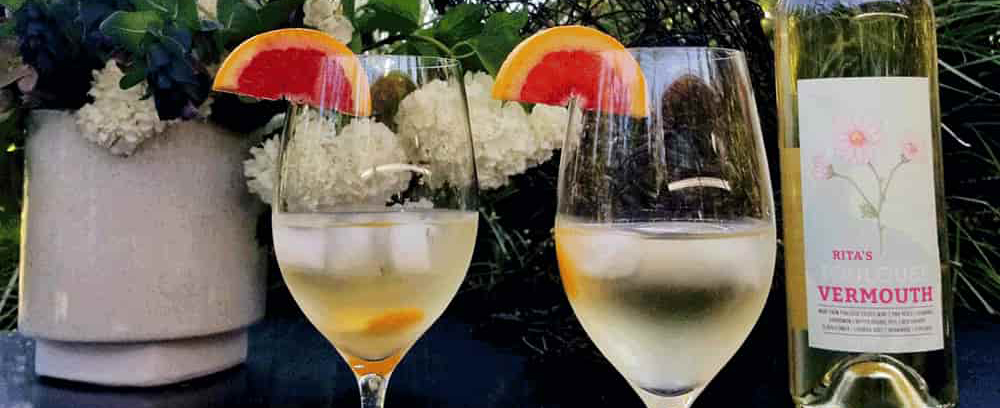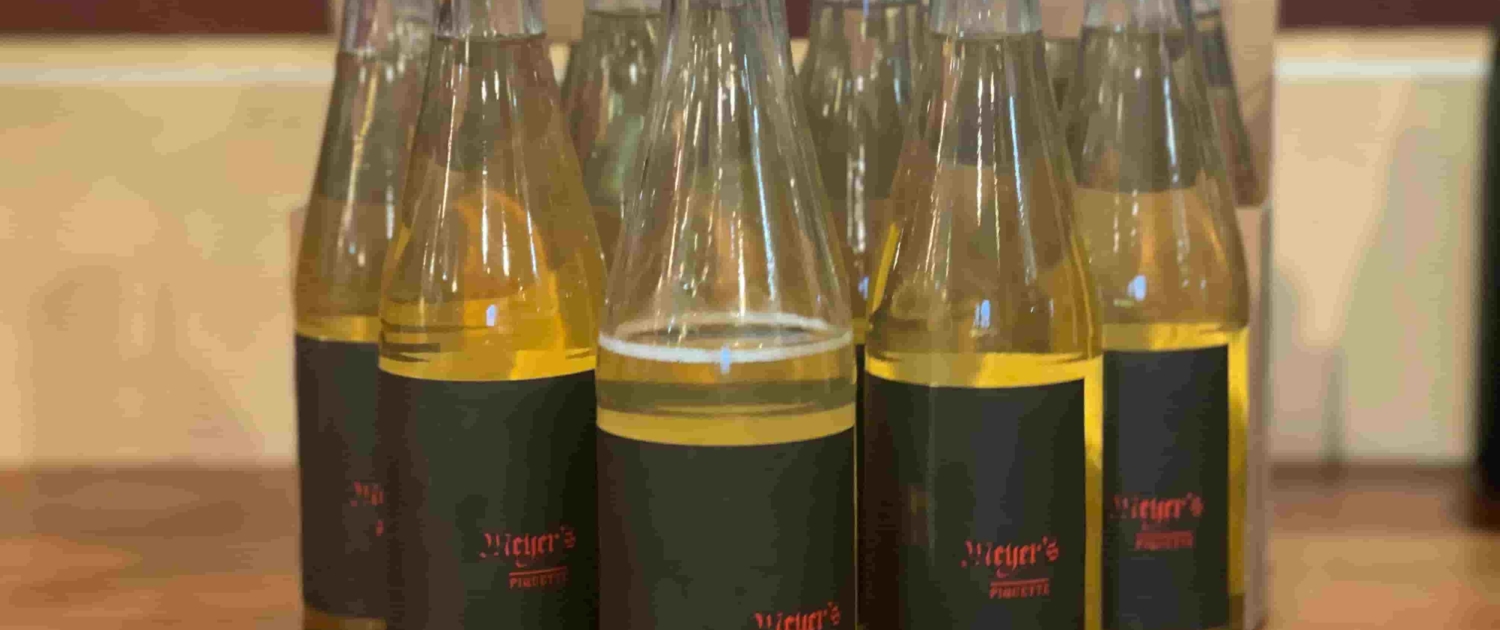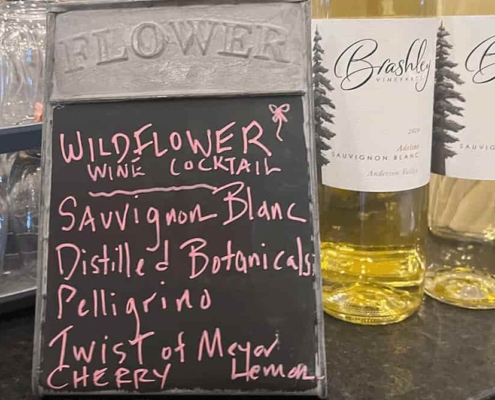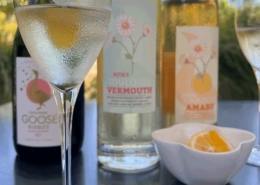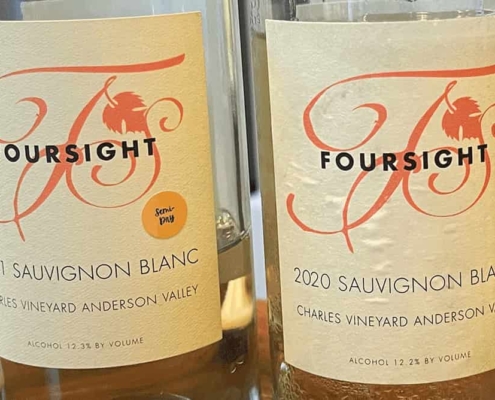The growing interest in low and non-alcoholic (NA) beverage alternatives represents a significant shift in consumer preferences, driven by various factors such as price sensitivities, lifestyle choices or other. This trend is particularly noticeable among younger consumers who are drinking less wine and alcoholic beverages overall. As a result, wineries are enjoying the ability to get creative from the versatility and potential for creative consumption methods.
Some Anderson Valley Producers Are Embracing the Low Alcoholic Demand
Like Piquette & Wine Botanical Cocktails
Imagine a fun new low-alcohol wine, hovering around 6%, and offering a new experience for the experienced Anderson Valley wine drinker. Meyer Family Cellars has crafted a new unique beverage that is fermented from the second pressing of Sauvignon Blanc grapes giving it the same tropical aromas of the varietal but at less than half the alcohol. The result? A lighter alcohol wine, still sparkling with carbonation, and packaged in a smaller container, perfect for sharing with a loved one or enjoying solo. The first bottling was tiny bottles, but winemaker Matt Meyer is moving version 2.0 into cans bottled locally at the AV Brewery.
Some producers are having fun exploring new beverage products. Whether it is mixing wine as cocktails, as Ashley Palm from Brashley Vineyards did during White Wine Weekend 2024 mixing together Sauvignon Blanc, Distilled Botanicals, Pelligrino, cherry, and twist of Meyer lemon (the lemons fresh off her tree). The result was a refreshing low alcohol start to the event! We also love the creative wine-cocktail by Toulouse Vineyards, including a mixture of sparkling wine, citrus and Vermouth and quickly becoming a favorite wine cocktail by many.
Foursight Wines is known annually for releasing a temporary addition to their portfolio. In the past, these have been Gewürztraminer, Orange Wine, and unoaked Pinot Noir. The newest experiment is a 12% Semi-Dry Sauvignon Blanc, which is slightly effervescent. It was gently pressed, fermented until nearly dry, aged in stainless steel and neutral French oak barrels and then sterile filtered to leave 1.5g/L of residual sugar. With slight effervescent bubbles, this wine is a fun one!
Their current tasting flight tastes this next to the traditional Sauvignon Blanc which lands usually around 13.5% and their son Evan’s third vintage of Orange Wine, also made from Sauvignon Blanc. The flight is unique and makes the new lower alcohol (in New World wine definition) something worth seeking out. They also have some fun recommendations for wine cocktails!
Anderson Valley Producers Husch, Navarro, Toulouse, Gowan’s, & The Apple Farm Have Non-Alcoholic Options
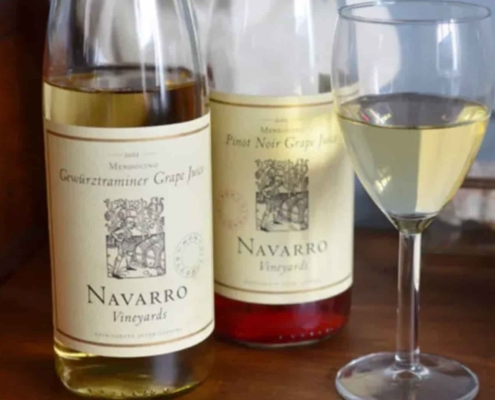
In wine regions like Anderson Valley, wineries like Navarro Vineyard and Husch Vineyard have been offering non-alcoholic grape juices from Gewürztraminer and Pinot Noir for decades. Other options in the valley like verjus, ciders, apple juice, and even low-calorie beer, reflect the landscape of consumer preferences desiring more diversity of options.
The recent success of low and NA offerings from various producers demonstrates the market potential for high-quality low and non-alcoholic beverages that rival their alcoholic counterparts in taste and complexity. Some NA companies have experimented with herbal recipes, incorporating ingredients like verjus and fruit juices, which have garnered praise from consumers and even impressed winemakers, which is becoming more and more important to younger generations, like millennials.
By embracing the NA category, Anderson Valley wineries and others in wine country have the opportunity to diversify the wine tasting experience, ensuring that there is a beverage option available for everyone. Toulouse Vineyards Winemaker Rita Vodopals has recently said that they hope to soon make a non-alcoholic botanical beverage as a continuation to their already popular wine-based botanical beverages they make, including Vermouth and Amaro .
Ultimately, as consumer preferences continue to evolve, wineries that adapt to these changes and offer innovative NA and low alcohol alternatives stand to gain recognition and support from a growing segment of the market.

